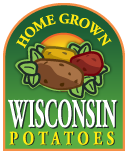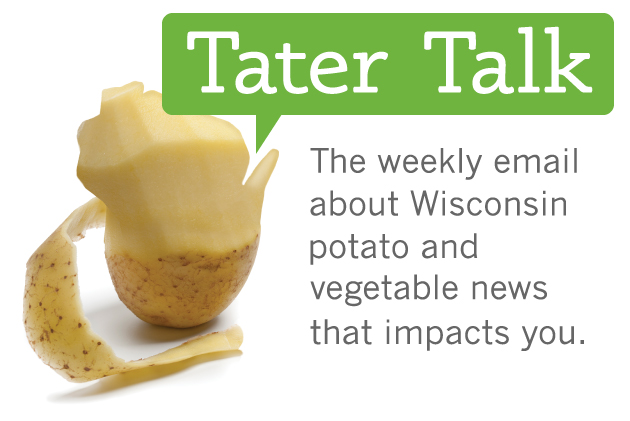Irrigated Vegetable Production Key to Central Wisconsin Economy
 Although it’s known as “America’s Dairyland,” many people don’t realize the state of Wisconsin is also among the nation’s leaders in the production of potatoes and vegetables.
Although it’s known as “America’s Dairyland,” many people don’t realize the state of Wisconsin is also among the nation’s leaders in the production of potatoes and vegetables.
In addition to leading the nation in the production of cranberries and ginseng, Wisconsin also consistently leads the nation in the production of snap beans for processing, with over 40% of the nation’s crop coming from the Badger State. Wisconsin also ranks first in the U.S. in the production of cabbage for kraut and beets for canning.
Wisconsin has large acreages of processing vegetables such as green peas (second in the US), sweet corn (third in the US), cucumbers (fourth in the US) and carrots (fifth in the US). Overall, Wisconsin ranks second in the nation for the production of processing vegetables, whether one uses planted acreage, total production, or farm gate value. In terms of potato production, Wisconsin consistently ranks third in the country behind Idaho and Washington.
“The Wisconsin potato and vegetable industry not only provides millions of servings of food for people around the world, but it also generates employment and income for many people,” said Duane Maatz, Executive Director of the Wisconsin Potato & Vegetable Growers Association (WPVGA). “Crop production and processing industries are somewhat invisible to many state residents, yet the work we do in potato and vegetable production in Wisconsin is important to millions of people. Not only are a lot of people fed high quality food as a result of our efforts, but we also provide jobs and livelihoods for many other people.”
Maatz says the key to vegetable production in Wisconsin is the efficient use of irrigation systems, which provide a sound insurance policy in drought years such as 2012. With over 60% of the state suffering through short to very short soil moisture conditions throughout the summer, advanced irrigation strategies have allowed potato and vegetable growers to produce high quality crops in spite of the historically dry conditions.
University of Wisconsin Extension Horticulturist Dr. A.J. Bussan says Wisconsin potato and vegetable growers use water wisely, and because of that, are able to produce food for the rest of the country with a much smaller carbon footprint than would otherwise be possible.
“Wisconsin ranks second nationally behind California in the production of all processed vegetables,” Bussan said. “We are 2,000 miles closer than California to 50% of the U.S. population that lives east of the Mississippi River. Irrigated production, particularly in Central Wisconsin, is the cornerstone of the vegetable industry that contributes to the $6.3 billion specialty crop industry and employs over 35,000 Wisconsin residents. The judicious use of water by Wisconsin farmers allows our state to produce food efficiently for over half the country’s citizens.”
Bussan said a lack of water would result in the loss of both crop yield and quality, which in turn would increase the acres necessary to meet production demands, reduce profitability and jeopardize the sustainability of the Wisconsin potato and vegetable industry.
“The groundwater aquifer in Central Wisconsin is unique locally and nationally,” Bussan said. “As long as annual precipitation continues to exceed annual pumping, the aquifer will be recharged and sustained. There is little or no evidence to suggest that irrigation threatens the aquifer’s long-term existence.”
Bussan said Wisconsin vegetable growers are outstanding stewards of the land, and have provided annual funding toward research to better understand the complexities of crop water use and evapotranspiration (ET), which is the loss of water to the atmosphere by the combined processes of evaporation (from soil and plant surfaces) and transpiration (from plant tissues).
“The industry is committed to the preservation of the groundwater resources in Central Wisconsin and throughout the state,” Bussan said. “The growers have invested in research to provide science-based solutions that are acceptable to farmers and their neighbors. ET-based irrigation scheduling and documenting ET by crop are just two of the many research projects funded by the WPVGA. We are also studying new varieties of crops that require lower amounts of water during peak times of crop growth.”
Maatz agreed that research has led to greater efficiency in the Wisconsin potato and vegetable industry.
“Every year the WPVGA spends about one-third of its total budget on research,” said Maatz. “In recent years, the research focus has expanded to address environmental concerns, including water conservation. Through our research conducted by University of Wisconsin scientists, we have gained great efficiencies in crop water management. We are also now able to produce the same amount of potatoes on 62,000 acres that we used to produce on 85,000 acres. That’s tremendous efficiency that’s taken place just in the last 20 years.”

